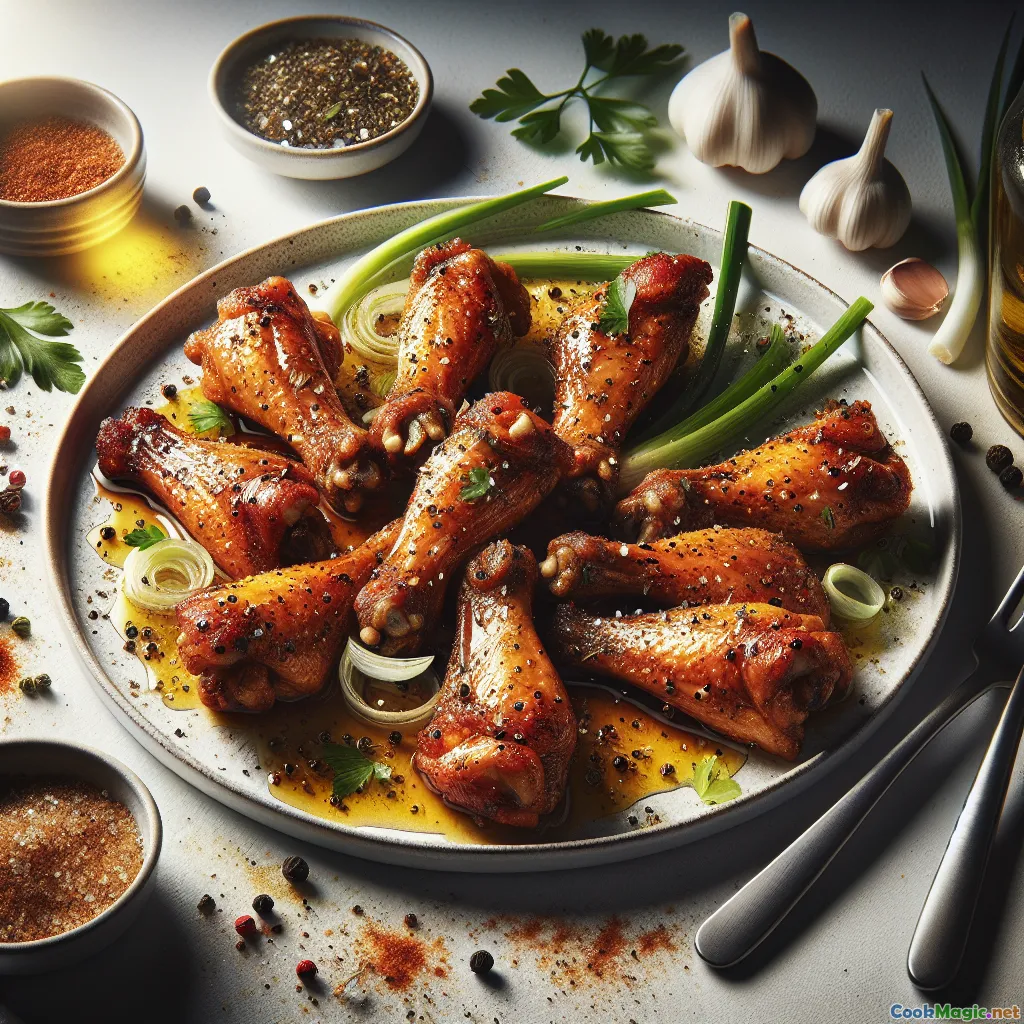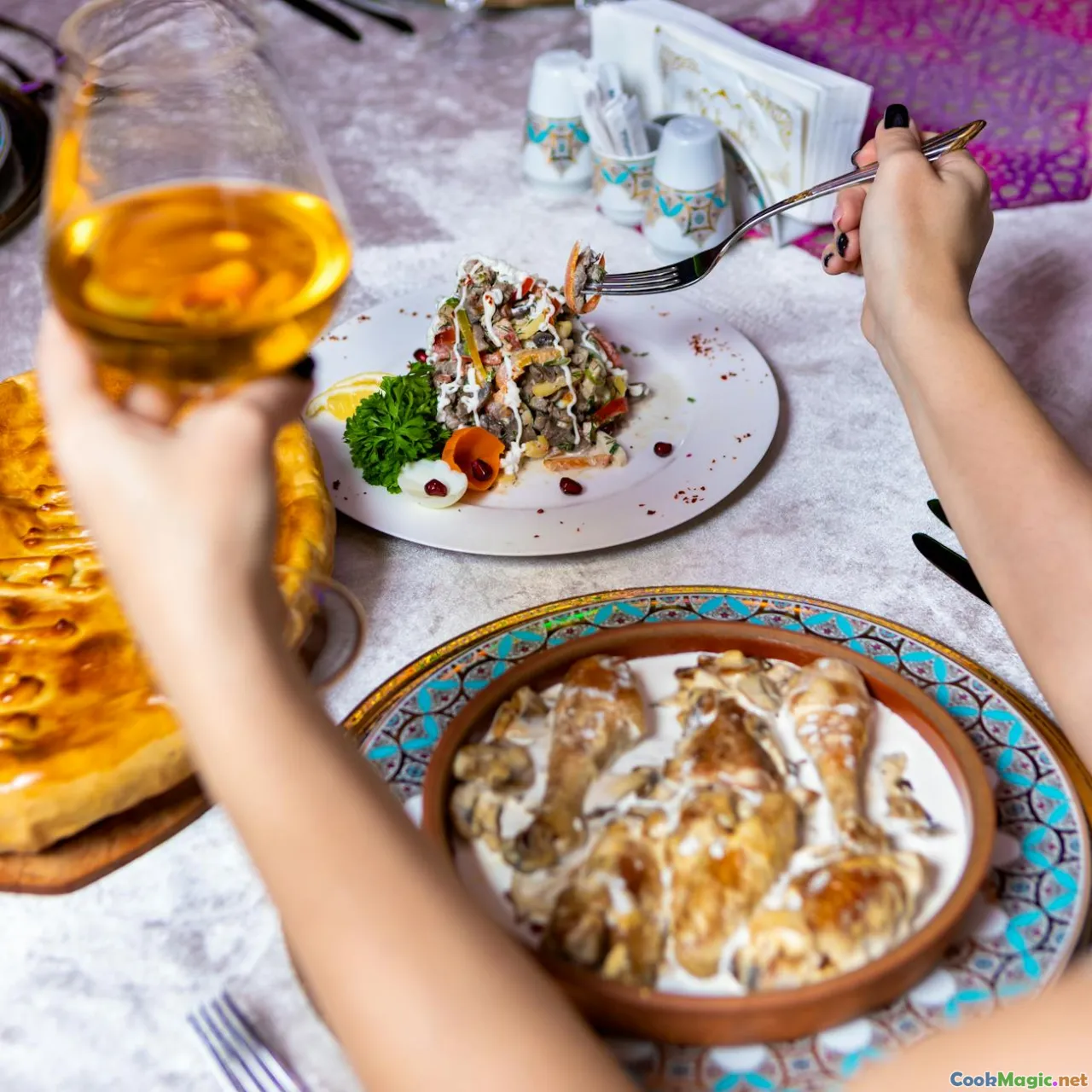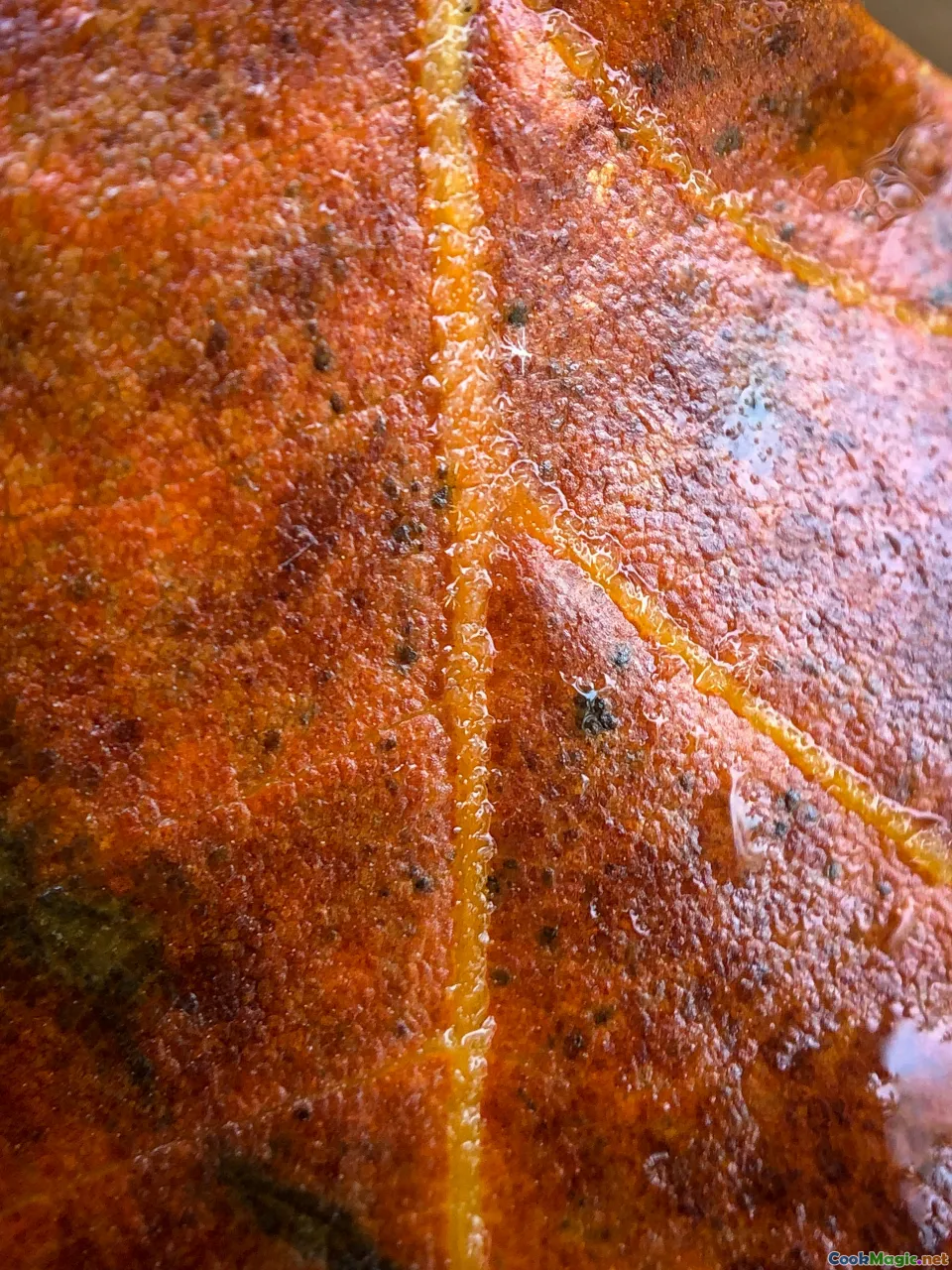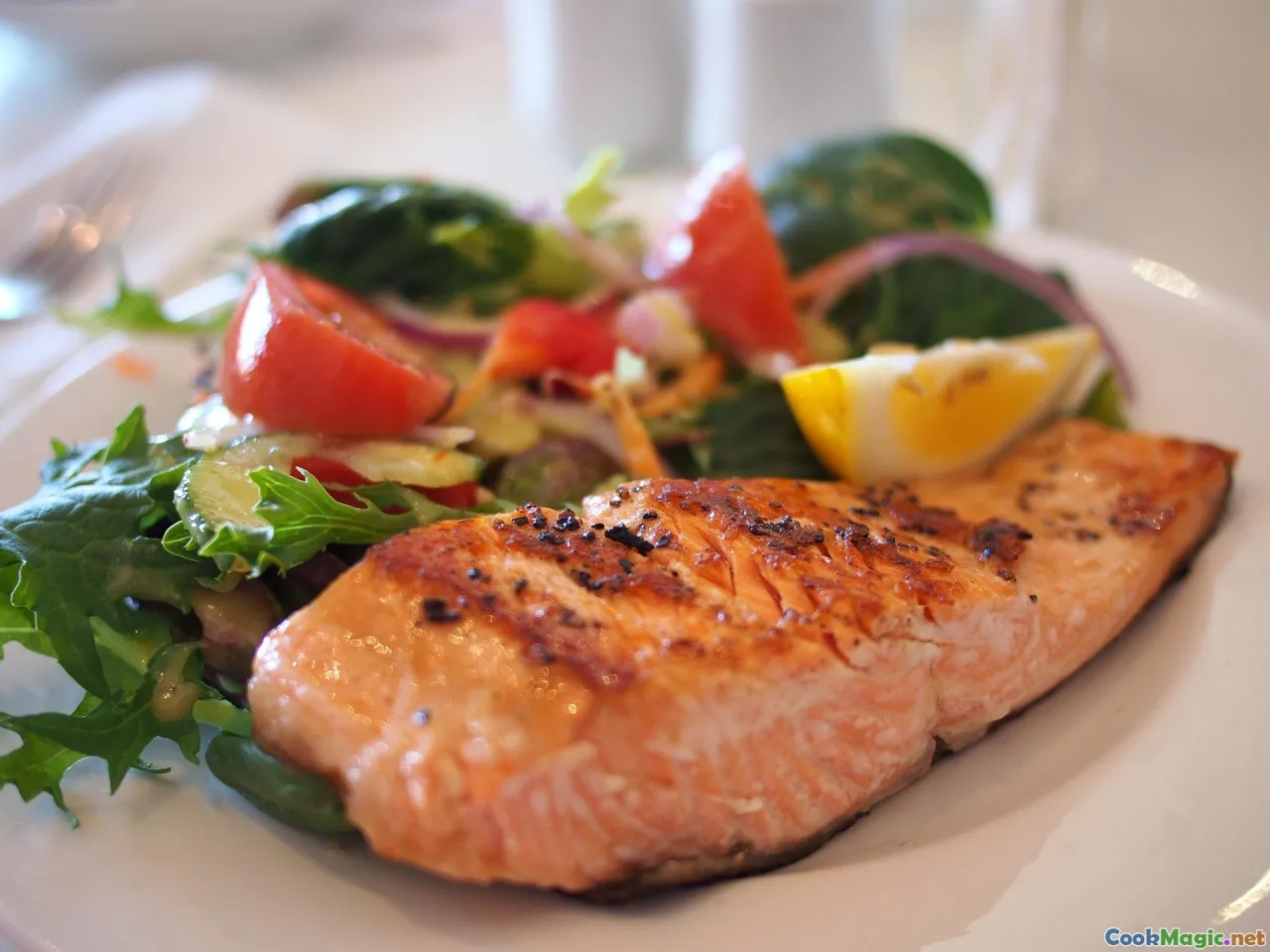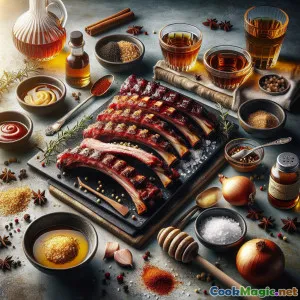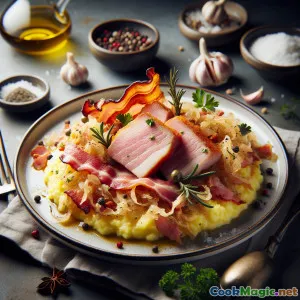
Sayap kalkun Kreol renyah dengan lemon dan lada
(Crispy Creole Lemon Pepper Turkey Wings)
(0 Ulasan)0
154
Oktober 26, 2025
Laporkan Masalah
Bahan
-
1500 g Sayap kalkun, dipisahkan pada sendi
(Pat very dry for crisp skin)
-
2 whole Lemon
(Zest both; juice for basting and sauce)
-
2 tsp lada hitam baru digiling
(Coarse grind for punchy lemon-pepper character)
-
1.5 tbsp Bumbu Creole
(Store-bought or homemade blend)
-
2 tsp Garam kosher
(Reduce to 1.5 tsp if using regular salt)
-
1 tsp Bubuk bawang putih
(Boosts savoriness without burning)
-
1 tsp Bubuk bawang
(Menambahkan rasa manis dan kedalaman)
-
1 tsp Paprika asap
(Smoky warmth to echo Creole profile)
-
1 tsp Thyme kering
(Classic herb in Creole blends)
-
0.5 tsp Oregano kering
(Round out herbal notes)
-
1.5 tsp baking powder (tanpa aluminium)
(Encourages blistered, crispy skin)
-
1 tsp Gula merah muda terang
(Balances acidity; caramelizes skin)
-
2 tbsp Minyak zaitun
(Helps seasoning adhere and render fat)
-
3 tbsp Mentega tanpa garam, cair
(For lemon-pepper baste)
-
240 ml Kaldu ayam rendah natrium
(Half for roasting moisture, half for pan sauce)
-
1 tsp Saus pedas
(Optional heat; Creole style)
-
1 tsp Tepung maizena
(Thicken pan sauce if desired)
-
2 tbsp Peterseli segar cincang
(Fresh finish)
-
2 stalks Daun bawang diiris tipis
(Bright, peppery garnish)
(Pat very dry for crisp skin)
(Zest both; juice for basting and sauce)
(Coarse grind for punchy lemon-pepper character)
(Store-bought or homemade blend)
(Reduce to 1.5 tsp if using regular salt)
(Boosts savoriness without burning)
(Menambahkan rasa manis dan kedalaman)
(Smoky warmth to echo Creole profile)
(Classic herb in Creole blends)
(Round out herbal notes)
(Encourages blistered, crispy skin)
(Balances acidity; caramelizes skin)
(Helps seasoning adhere and render fat)
(For lemon-pepper baste)
(Half for roasting moisture, half for pan sauce)
(Optional heat; Creole style)
(Thicken pan sauce if desired)
(Fresh finish)
(Bright, peppery garnish)
Nutrisi
- Porsi: 4
- Ukuran Porsi: 2 wings (300g)
- Calories: 720 kcal
- Carbohydrates: 0 g
- Protein: 58 g
- Fat: 48 g
- Fiber: 1 g
- Sugar: 2 g
- Sodium: 1200 mg
- Cholesterol: 215 mg
- Calcium: 50 mg
- Iron: 3.5 mg
Instruksi
-
1 - Prep the wings:
Separate turkey wings at the joints if not pre-cut. Trim excess skin flaps, pat wings very dry with paper towels, and set on a rack over a sheet pan.
-
2 - Dry brine for crispness:
Toss wings with kosher salt and baking powder. Let sit at room temperature 15–20 minutes while you mix the seasoning. This dries the skin and seasons the meat.
-
3 - Make Creole lemon-pepper rub:
In a bowl, combine lemon zest from both lemons, black pepper, Creole seasoning, garlic powder, onion powder, smoked paprika, thyme, oregano, and brown sugar if using.
-
4 - Season the wings:
Drizzle wings with olive oil, then sprinkle the rub evenly, pressing it into all sides. Reserve the juiced lemon halves for the pan.
-
5 - Set up roasting pan:
Place a wire rack over a rimmed sheet pan. Arrange wings skin side up with a little space between. Pour half the chicken stock into the pan under the rack; add squeezed lemon halves.
-
6 - Roast high and hot:
Roast at 220°C/425°F for 25 minutes to start rendering fat and blistering the skin. Do not cover.
-
7 - Mix lemon-butter baste:
Stir melted butter with half the lemon juice and hot sauce if using. After 25 minutes, baste wings, flip, and baste the underside.
-
8 - Finish roasting:
Flip wings back skin side up. Roast another 35–45 minutes, basting once more, until deeply golden and 74°C/165°F internal. Broil 2–3 minutes if extra crispness is desired.
-
9 - Make pan sauce:
Set wings aside to rest. Pour pan juices into a small saucepan; add remaining stock and lemon juice. Simmer 2–3 minutes. For thicker sauce, whisk cornstarch with 1 tbsp water and stir in; simmer to glossy.
-
10 - Garnish and Serve:
Toss or drizzle wings with pan sauce. Scatter parsley and green onions. Serve immediately with extra lemon wedges if you like.
Separate turkey wings at the joints if not pre-cut. Trim excess skin flaps, pat wings very dry with paper towels, and set on a rack over a sheet pan.
Toss wings with kosher salt and baking powder. Let sit at room temperature 15–20 minutes while you mix the seasoning. This dries the skin and seasons the meat.
In a bowl, combine lemon zest from both lemons, black pepper, Creole seasoning, garlic powder, onion powder, smoked paprika, thyme, oregano, and brown sugar if using.
Drizzle wings with olive oil, then sprinkle the rub evenly, pressing it into all sides. Reserve the juiced lemon halves for the pan.
Place a wire rack over a rimmed sheet pan. Arrange wings skin side up with a little space between. Pour half the chicken stock into the pan under the rack; add squeezed lemon halves.
Roast at 220°C/425°F for 25 minutes to start rendering fat and blistering the skin. Do not cover.
Stir melted butter with half the lemon juice and hot sauce if using. After 25 minutes, baste wings, flip, and baste the underside.
Flip wings back skin side up. Roast another 35–45 minutes, basting once more, until deeply golden and 74°C/165°F internal. Broil 2–3 minutes if extra crispness is desired.
Set wings aside to rest. Pour pan juices into a small saucepan; add remaining stock and lemon juice. Simmer 2–3 minutes. For thicker sauce, whisk cornstarch with 1 tbsp water and stir in; simmer to glossy.
Toss or drizzle wings with pan sauce. Scatter parsley and green onions. Serve immediately with extra lemon wedges if you like.
Informasi Lebih Lanjut: Sayap kalkun Kreol renyah dengan lemon dan lada
Why these Creole Lemon Pepper Turkey Wings work
This dish marries two beloved Southern flavors: the bright, addictive pop of lemon pepper and the soulful depth of Creole spice. Turkey wings, with their rich skin and generous meat, stand up beautifully to bold seasoning and high-heat roasting. The method here is designed for maximum crispness without deep-frying, using a wire rack, a dry-brine with baking powder, and a hot oven to render fat and blister the skin.
Flavor profile and texture
Expect a crackly, well-seasoned exterior balanced by juicy, tender meat. Lemon zest and juice bring an aromatic tang; coarse black pepper adds bite; Creole seasoning weaves in paprika, thyme, garlic, and a whisper of heat. A final lemon-butter baste glosses the wings and amplifies citrusy, peppery notes.
Technique keys
- Dry brine: Salt plus a touch of aluminum-free baking powder draws moisture to the surface, then the oven evaporates it, yielding a lacquered, crisp skin.
- Rack roasting: Elevating the wings allows hot air to circulate and fat to drip away instead of pooling.
- Moisture management: A small amount of stock in the pan adds humidity early on, preventing the meat from drying while the skin still crisps; it also becomes the base of a quick pan sauce.
- Pepper bloom: Using coarse, freshly cracked pepper preserves its aromatic oils through roasting, so you truly taste the lemon-pepper personality.
Ingredient swaps
- Turkey alternatives: Substitute chicken wings and reduce cook time to about 45–50 minutes total.
- Dairy-free: Replace butter with olive oil or a neutral, high-heat oil.
- Heat level: Add cayenne to the rub or increase hot sauce in the baste for a fiery finish. Keep it mild by reducing Creole seasoning and pepper slightly.
- Salt: If using fine table salt, use about 25% less than kosher to avoid oversalting.
Serving ideas
These wings shine with dirty rice, skillet cornbread, mustardy coleslaw, or garlicky green beans. A tangy dill pickle or quick-pickled red onion cuts through richness. For sauces, try remoulade, extra lemon wedges, or a honey-hot drizzle.
Make-ahead and storage
- Prep ahead: Season and refrigerate uncovered up to 12 hours for even crisper skin; let sit at room temperature 20 minutes before roasting.
- Leftovers: Refrigerate up to 4 days. Reheat on a rack at 200°C/400°F for 10–12 minutes to re-crisp.
- Freezer: Freeze cooked wings up to 2 months; thaw overnight, then reheat as above.
Cultural notes
Creole cuisine reflects the vibrant confluence of French, Spanish, West African, Caribbean, and Indigenous influences centered in Louisiana. Its seasoning blends lean on paprika, garlic, thyme, oregano, and mild heat. Lemon pepper, meanwhile, is a wing-culture icon popularized across the South, notably in Atlanta. Bringing them together on turkey—an American staple—creates a dish that tastes familiar yet distinctly regional.
Tips for success
- Pat very dry: Moisture is the enemy of crisp skin. Paper towels are your friend.
- Space the wings: Crowding traps steam and softens the skin.
- Mind the pepper: Coarse grind delivers a robust lemon-pepper identity. Fine dust can taste muddy.
- Finish strong: A brief broil sets the exterior to shattering crispness; watch closely to avoid scorching.
- Use the lemons fully: Zest for perfume, juice for brightness, squeezed halves to perfume the roasting pan.
Troubleshooting
- Skin not crisp: Increase oven temperature slightly, broil briefly, or ensure you used a rack. Next time, dry-brine longer and avoid wet marinades.
- Too sour: Add a pinch more brown sugar or a knob of butter to the sauce to round the acidity.
- Too salty: Balance with unsalted butter and a squeeze of extra lemon; serve with neutral sides like rice or potatoes.
Food safety
Cook poultry to at least 74°C/165°F at the thickest point. Rest wings a few minutes to redistribute juices. Keep raw poultry and cooked foods separate, and sanitize surfaces.
Sustainability and frugality
Save the wing bones to make a vibrant stock for gumbo or jambalaya. Use the lemon peels to infuse cleaning vinegar or to make a citrus salt. These small choices stretch value and reduce waste.
Personal note
I love how turkey wings let you go bold. Where chicken wings can feel snacky, turkey wings eat like a meal, soaking up spice and citrus while delivering that irresistible wing-night crunch. This recipe has enough personality for a party platter and enough comfort for a Sunday supper—proof that, with a little technique, the oven can turn out wings every bit as craveable as the fryer.
